An observational analysis of the training and preparation of Kenenisa Bekele and Wilson Kipsang
Part 2 – Wilson Kipsang
Thank you to those of you who took the time to read my previous entry on Kenenisa Bekele (with guest appearances from Jake and Zane Robertson) which can be found here for those who missed it. In that blog we looked at the scientific approach to training and preparation taken by Bekele and suggested that Kipsang’s approach was somewhat contrasting.
Kipsang was beaten in Berlin on this occasion but let’s not forget that he is still a former world record holder, a twice London Marathon winner, a previous winner of Berlin and New York Marathons and an Olympic Medalist to boot. The two runners were close enough 2 weeks back in Berlin to make the comparison of their approaches very relevant in considering how different inputs can equal a very similar output. This is not a piece designed to favour one over the other but simply to highlight some differences as well as to share some additional insight and information on Wilson Kipsang.
If there were lessons to be learned from Bekele’s new technical and scientific approach, then I would argue that there are even more lessons to learned from Kipsang’s simplistic approach.
There is almost nothing about Kipsang’s training or lifestyle which could not be replicated by runners of any level across the world. No fancy gadgets, no cutting edge technology, no access to expensive labs and scientists, for the most part not even a coach. Just his Adidas running shoes, his training partners and the open roads – which in his case are dirt roads, hilly, and located at 8500ft above sea level in glorious sunshine – but don’t let that deter you from reading on to discover his not so well kept secrets.
Kipsang’s basic approach to training is very similar to the typical/standard Kenyan way of training with some specific nuances which we will discuss later. If you have previously read anything about the ‘standard’ Kenyan training program for distance runners then you will already have some background on how Kipsang trains.
We don’t have time to delve into all the specifics of the program here but at it’s most basic level, a typical week of Kenyan running would look something like this:
Monday: Progressive Run
Tuesday: Track Intervals
Wednesday: Easy
Thursday: Fartlek
Friday: Easy
Saturday: Long Run
Sunday: Rest
Monday through Friday are usually double run days with a light jog in the afternoons, the above are the main sessions of the day.
This post on Wilson’s own website confirms that his weekly program is roughly in line with the above
Monday is a moderately hard run and is closer to what most western runners would recognise as a tempo run than an easy run. Wednesday and Friday would depend on how the individual runner is feeling and are sometimes light and easy and sometimes pretty hard but nearly always progressive to one extent or another. Tuesday, Thursday and Saturday are the main workouts of the week.
Kipsang has for the most part of his long career been self coached and is in fact the group leader of a very large training group in Iten. It could be said that Kipsang himself is a coach and a very successful one with some good results coming out of his training group.
Top Kenyan runners are very welcoming to other runners joining their sessions and the standard practice is that local training groups are built around the fastest athletes. Other athletes of all levels are drawn towards the fastest and the most successful runners then see their training groups growing larger and larger. The strongest runners in the group will decide on the specific workouts and the rest of the group follows suit.
Wilson is group leader of a large group of runners in Iten called the ‘Miswo wa Lami’ group – or ‘End of the Tarmac’ group. The name is not as ominous as it may sound and simply refers to the meeting point of that group which is quite literally the point at which the tarmac road turns back to dirt (although the road has in the past few years finally been extended the name has stuck). Each morning at 6am upwards of 50 runners will be waiting at Miswo wa Lami to hear their daily assignment from Kipsang.
(Follow this link for a great picture of Wilson instructing his group from photo journalist Brendan Bannon)
So, by dictating his own training Kipsang automatically became the coach for a large number of other Kenyan runners, and it’s no surprise that the Miswo Wa Lami group is one the most respected and high quality in Iten.
Although Kipsang is a self coached runner, he is also intelligent enough to know when he needs to seek advice and the man he will often turn to in these times is Renato Canova. When I was working alongside Canova in Iten he would frequently meet with Wilson at his Kerio View lodgings for a casual chat about training acting as a sounding board and advisor.
Canova described to me that Wilson’s biggest asset in his opinion, is his intelligence and his ability to listen to his body and adapt his training accordingly. In football/soccer you often hear the phrase that a player “has a footballing brain’ and I think that the running version applies to Kipsang – he has a distance runners brain and can perfectly assess his bodies condition to know when is the right time to push hard and when he needs to back off a little.
If you know much about Renato Canova’s marathon program then you will know that he believes the typical Kenyan approach of 3 hard days every week is too much to achieve optimal results. Canova believes that it does not allow adequate recovery between the workouts, or allow the workouts themselves to be high enough volume and/or intensity. Canova believes in a program where your hard days are harder but they are run less frequently than the typical Tues/Thurs/Sat approach seen in Kenyan training.
This is where things get really interesting in the specific case of Kipsang. At first glance it may appear that his approach is contrary to Canova’s but Canova is full of praise for his training and how he balances hard work and recovery.
According to Canova, whilst Kipsang generally does follow the set weekly program whereby Tuesday, Thursday and Saturday are all hard running days the difference is that he knows when to back off even within ‘hard’ sessions. It is not uncommon to see Kipsang running in the middle of the pack during workouts. Thursdays in Iten are a fartlek day for most, and it’s the one time of the week where numerous different training groups converge to train together in one 300 strong group. As you can imagine this impressive sight of 300+ Kenyan runners together can become very competitive with race worthy efforts being put forward by some. Kipsang has often been seen happily in mid pack, running alongside runners who would not break 2hr 13 for the marathon some 10minutes slower than his own personal best.
Canova told me that Kipsang balances his effort across the training period so that although he is present in 3 hard workouts a week he is only truly working at a high intensity twice. The other is, by his own standards, more of a moderate effort run. So in any given week he may run the intervals and the long run hard and take the fartlek as moderate. The following week the intervals and the fartlek are hard but the long run is comfortable, running with slower runners and so on.
But if that is the case, and Kipsang knows that that is the best approach for him, why doesn’t he simply do the training that way anyway regardless of whether or not it the best fit for his larger training group? After all he could easily select the faster runners to train with him in a small group and not worry about the masses who are someway behind him by the time they get moving faster anyway.
The question leads us perfectly into the final section of this post. The answer is quite simple – Wilson Kipsang puts other peoples needs above those of his own.
The Tuesday/Thursday/Saturday pattern is deeply ingrained in the mindset and culture of Kenyan running. More than 90% of the runners in Kenya do not have a coach so follow this pattern. And most of the coaches in Iten use that pattern with their runners anyway. The only runners not following this are the very small minority who have a coach telling them specifically to do otherwise, mainly groups or individuals coached by Europeans – In Iten Canova or Gabrielle Nicola for example. So to simply expect Wilson to move his entire group away from this pattern of training is too simplistic and quite unrealistic. Even from a purely logistical perspective it would be nightmare – there’s no website he can update with this weeks training venues and times, no Facebook group messenger that his athletes will be checking – they just know that at certain times on certain days of the week that is where they need to be!
Canova told me that Kipsang cannot (or rather does not want to) deviate from this because he feels a deep commitment to the other athletes in his group who look up to him and rely on him for leadership and guidance in their own running. Going off to do his own training would leave 50+ other runners without that guidance and inspiring the next generation of Kenyan runners must come above his own needs.
Wilson is not only a leader amongst the runners in Iten, he is also a community leader and is instrumental in securing (and personally financing) funding for projects in his local community of Mindiliwa (a small sub district of Iten).
Wilson is also a senior member of PAAK (Professional Athletes Association of Kenya), an organisation fighting for a better deal for Kenya’s runners and an improvement in leadership amongst the sports administrators. As a tier 1 athlete, Wilson does very well out of the sport from a financial perspective – but the fight of PAAK is not for tier 1 athletes, they are fighting to improve the welfare and standards for all athletes across Kenya regardless of their standard. It is a time consuming and often frustrating challenge to try and make progress in a world which has long been dominated by autocrats who do not want to be challenged or even questioned. Wilson could live a comfortable life but chooses instead to put his neck on the line for those not in his privileged position.
You don’t just need to take my word for it that Wilson is an altruistic man, instead take this specific example (Which I believe to be typical rather than a one off gesture).
A good friend of mine, Myles Edwards runs the charity organisation Gathimba Edwards Foundation along with Kenyan international runner Gideon Gathimba. This week Myles will have group of volunteers in Kenya building new homes for the families of some of the children their organisation supports. As part of the trip Myles is taking the group on a brief visit to Iten to see the area that started his own love affair with Kenya. They will stay at Wilson’s Keeluu Resort Centre (Did I mention that Wilson also operates a Hotel where he is an active manager taking care of the day to day running and looking after the many staff he employs?) and when he heard why the group were in Kenya he immediately volunteered to help them.
One of Kenya’s most recognisably men and a wealthy sports star getting hands dirty building homes for impoverished children.
This blog is probably the only outside coverage that event will get and Wilson has no idea that I am writing it. This is not the act of an attention seeking celebrity saying looking to boost their own profile in front of the cameras. No one will notice, no one will talk about it on twitter or instagram, and that will be fine for Kipsang. He’s doing it for the right reasons and it sums up what I have learned about him over the years and my experiences with him personally.
Many of our Kenya Experience groups have been welcomed with a smiling face to sit and chat with Wilson or simply to pose for photos – He’s just an all round good guy!
From a personal perspective Wilson is one of those guys who you just cannot help but be inspired by. One of my favourite routes to run in Iten involves heading out of town towards Singore Forest, a loop inside the forest to Singore Girls School (What St Patricks is to boys running in Kenya, Singore is to girls with an alumni medalist list as long as your arm) then back up the long drag to Iten. Whilst beautiful, it is also a very tough ending to an already difficult run with a few kms straight uphill. As you get to the middle of one of the toughest sections of the climb, those who know where to look can glance off to the right to see a modest but well built house amongst the shacks and maize fields. It’s Wilson Kipsang’s family home. Now I’m not one for motivational quotes or overly emotional and mushy descriptions but I must admit that the thought of ‘Kipsang runs this hill every day’ has undoubtedly got me up that hill faster on many occasions.
I hope that Wilson’s continued achievements on the roads as well as his shining example of how to conduct yourself off it will help you up your own hill a bit faster just as it has helped me up mine (and there I was saying I didn’t do mushy/inspirational stuff!)
Thanks for reading,
Gavin
About the author:
Gavin Smith is founder of The Kenya Experience and today manages the UK office. From 2010 – 2014 he was Renato Canova’s Assistant Coach where he worked with Kenyan runners including world record holder Florence Kiplagat (pictured with Smith and Canova) and Olympic medalist Abel Kirui. He is a competitive athlete himself and enjoys combining his own training with running The Kenya Experience.
————————————————————————————————————————————————————————————–The Kenya Experience – Running Camps in Iten Kenya for all runners
Our running camps provide an inspirational location, expert coaching and a supportive group environment for runners of all levels.
With an emphasis on ‘doing it the Kenyan way’ the camps include guided runs, practical workshops and an exciting itinerary outside of the actual training itself which will immerse you inside the Kenyan running scene. You will meet and learn from top Kenyan runners & coaches and interact with the local community in Iten under the guidance of our expert staff.
Want to know more? Click here for details on our training camps

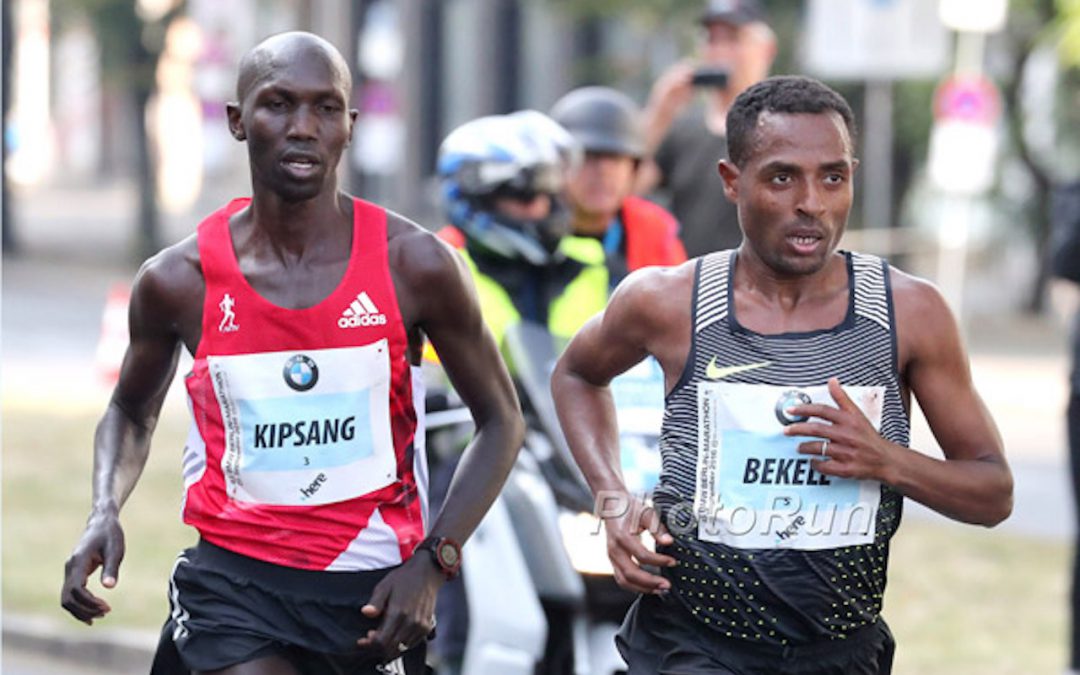
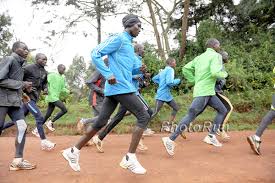
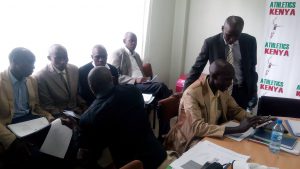
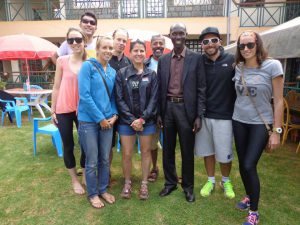
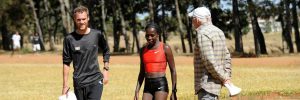
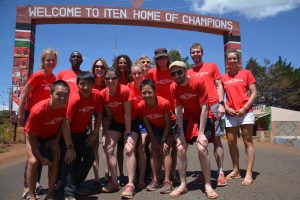
Recent Comments